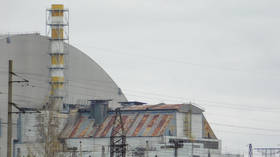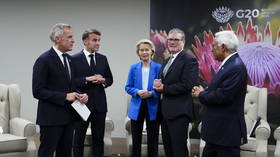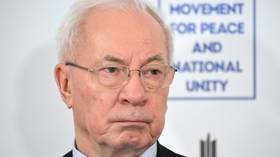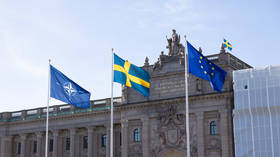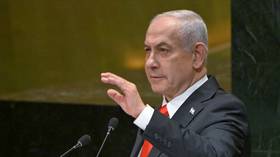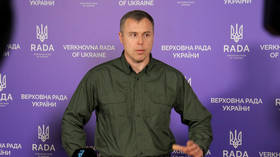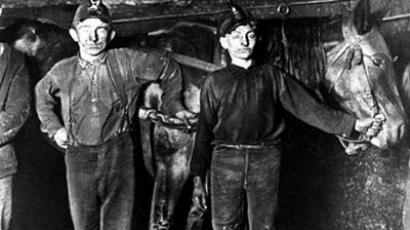US military secretly sprayed radioactive particles in St. Louis and Texas
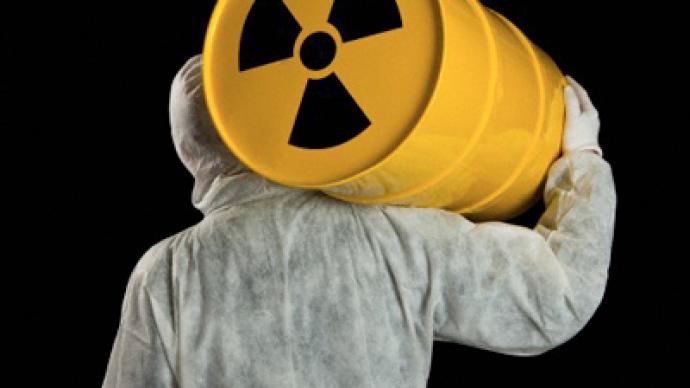
A college professor from St. Louis, Missouri claims that allegedly harmless chemical sprays that doused the city in the 1950s and ‘60s as a Cold War-era protection measure was something much more sinister.
Lisa Martino-Taylor, a sociologist at the St. Louis Community College in the Midwest, has been endlessly digging through publically available archives and documents obtained through Freedom of Information Act requests to learn more about a bizarre spraying program that blanketed parts of her hometown and other cities during the Cold War. At the time, the US Army admitted to showering certain locales with a chemical mixture, but said it was to test smoke screens they’d deploy to shield St. Louis from any nuclear assault by way of Russia. According to Martino-Taylor, the Army and others misled the public and actually poisoned residents of St. Louis and other cities with a dangerous compound composed of zinc cadmium sulfide and radioactive elements."It was pretty shocking. The level of duplicity and secrecy,” the researcher tells St. Louis’ KSDK. “Clearly they went to great lengths to deceive people."Martino-Taylor has been researching what she calls the Manhattan-Rochester Coalition since at least 2011, but only last month formally presented her findings. In it, she suggests that tests in St. Louis and in Corpus Christi, Texas involved military personnel relying on low-flying airplanes to spray city skylines and even in some instances using chemical sprayers placed atop skyscrapers and station wagons, all the while using unsuspecting citizens as test subjects in the budding steps of biological warfare."The study was secretive for reason. They didn't have volunteers stepping up and saying yeah, I'll breathe zinc cadmium sulfide with radioactive particles," she tells KSDK.Instead of using curious citizens as test-subjects, the Army resorted to waging a secretive radioactive war on its own impoverished townspeople: according to the material Martino-Taylor has collected, the military launched no fewer than 16 tests in only the year 1953 that involved 35 separate releases of zinc cadmium sulfide in St. Louis. The neighborhoods affected, the professor found, were described at the time as "a densely populated slum district” that held around 10,000 low income residents, mostly children.Martino-Taylor says she hasn’t been able to confirm for certain that St. Louisans were subject to radiological testing, but tells KSDK, "There's an awful lot of evidence that there were radiological components to the study." She says that a powder form of zinc cadmium sulfide was mixed with fluorescent particles so that dispersal patterns could be traced among unknowing test-subjects, and that a company called US Radium — previously put before a judge for radioactively contaminating its workers — has been linked to the scandal."US radium had this reputation where they had been found legally liable for producing a radioactive powdered paint that killed many young women who painted fluorescent watch tiles," she says.Regardless of what her future research reveals, she says, "This was a violation of all medical ethics, all international codes, and the military's own policy at that time.”On Monday this week, local lawmakers terrified of Martino-Taylor’s analysis asked the Army to come forth and explain the actual merits of the mysterious spray program that has long been acknowledged, but not necessarily with the greatest of accuracy."The idea that thousands of Missourians were unwillingly exposed to harmful materials in order to determine their health effects is absolutely shocking. It should come as no surprise that these individuals and their families are demanding answers of government officials," State Senator Roy Blunt (R) tells the Associated Press. State Sen. Claire McCaskill, a Democrat, has also asked Army Secretary John McHugh for more information in a letter sent this week."The Senate and House had investigations back in the 1990s but nothing ever came of it," Martino-Taylor says. "Nobody has ever talked to the people who were exposed."


